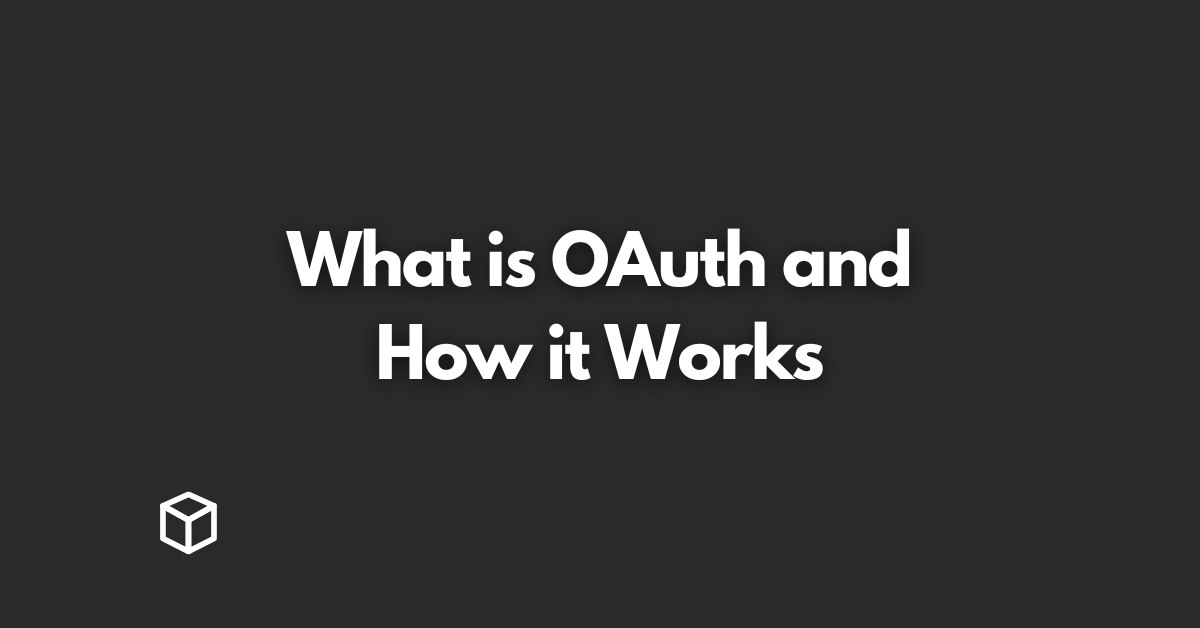OAuth is an open-standard authorization protocol that enables applications to access user data without the need for a password.
It is a widely used protocol that allows users to grant third-party applications access to their data, such as email, contacts, and calendar, stored on another website.
This is done by redirecting users to the website where their data is stored and obtaining an access token, which is then used to access the user’s data.
One of the most common use cases for OAuth is logging in to third-party apps using a Google or Facebook account.
Instead of creating a new account, users can simply use their existing Google or Facebook account to log in to the third-party app.
This makes the process of signing up for new apps much more convenient for users and also reduces the risk of forgotten passwords.
Background on authentication and authorization
Authentication and authorization are two closely related concepts that are essential to understanding OAuth.
Authentication is the process of verifying the identity of a user, while authorization is the process of determining whether a user is allowed to access a particular resource.
Traditional authentication methods, such as username and password, have several limitations and drawbacks.
Passwords can be easily forgotten, and users often reuse the same password for multiple accounts, which increases the risk of data breaches.
Further, these traditional methods rely on the user to remember and protect their password, which can be difficult to enforce.
How OAuth works
OAuth works by redirecting users to the website where their data is stored and obtaining an access token, which is then used to access the user’s data.
The OAuth flow involves four roles: resource owner, resource server, client, and authorization server.
The resource owner is the user who wants to grant access to their data.
The resource server is the server that stores the user’s data.
The client is the third-party application that wants to access the user’s data.
The authorization server is responsible for managing access tokens and ensuring that they are only used for authorized requests.
There are four different OAuth grant types: authorization code, implicit, client credentials, and resource owner password credentials.
The authorization code grant type is the most commonly used and is recommended for server-side web applications.
The implicit grant type is recommended for client-side web applications, while the client credentials and resource owner password credentials grant types are recommended for backend services.
Security considerations and best practices for using OAuth 2.0
When using OAuth, it is important to consider the security of the access tokens.
Access tokens should be stored securely and should be encrypted when transmitted over the network.
Further, it is important to use secure connections (HTTPS) to prevent man-in-the-middle attacks.
Implementing OAuth
OAuth can be implemented in different programming languages and frameworks.
Some of the popular libraries and tools for implementing OAuth include Spring Security OAuth, OAuth2orize, and Passport.js.
When implementing OAuth, it is important to be familiar with the OAuth specification and to understand the different grant types.
Further, it is important to test the implementation thoroughly and to use debugging tools such as Fiddler to troubleshoot any issues.
Conclusion
In conclusion, OAuth is a widely used protocol that allows users to grant third-party applications access to their data without the need for a password.
It works by redirecting users to the website where their data is stored and obtaining an access token, which is then used to access the user’s data.
Understanding the basics of OAuth and its different grant types, as well as the security considerations, is crucial for implementing OAuth in a safe and secure way.




